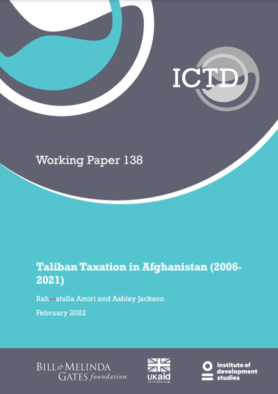Working Paper 138
Before taking control of Afghanistan in August 2021, the Taliban had developed a remarkably state-like revenue collection system throughout the country. This ICTD research explores how that came to be, and what factors shaped the various forms of Taliban taxation.
Drawing primarily on fieldwork from Helmand, Ghazni and Kunduz provinces, this paper explores in depth three commonplace types of Taliban taxation: ushr (effectively a harvest tax, applied to both legal crops as well as opium), taxation on transport of goods (similar to customs), and taxes on aid interventions. The paper pays particular attention to geographic variation, exploring how and why each practice evolved differently at the subnational level.
